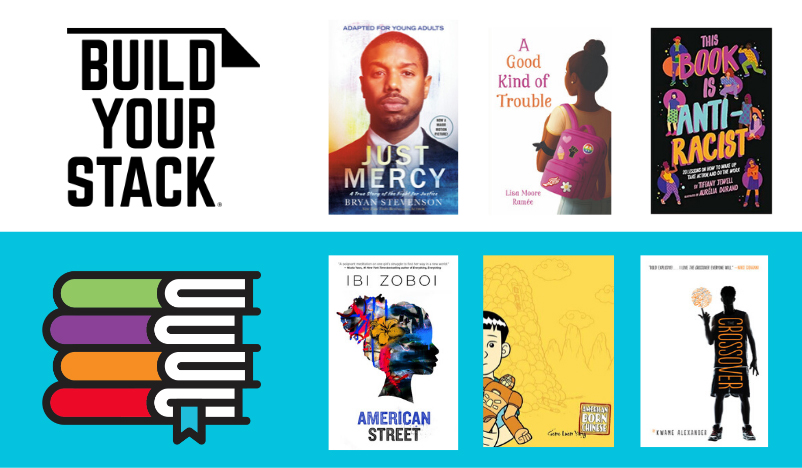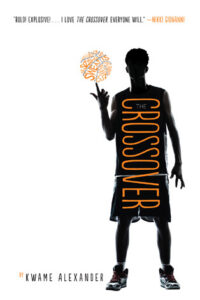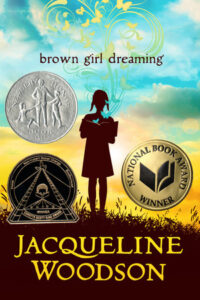From the NCTE Committee Against Racism and Bias in the Teaching of English
This post was written by Lorena Germán (chair), Kathleen Colantonio-Yurko, Felicia Hamilton, and Holly Spinelli, members of the NCTE Committee Against Racism and Bias in the Teaching of English. It is part of Build Your Stack®, an NCTE initiative focused exclusively on helping teachers build their book knowledge and their classroom libraries. Build Your Stack provides a forum for contributors to share books from their classroom experience; inclusion in a blog post does not imply endorsement or promotion of specific books by NCTE.
The Committee Against Racism and Bias in the Teaching of English believes it’s always a good time to teach about antiracism; however we also recognize that now is a time when most students and most adults are particularly ready to lean in and continue their understandings of antiracist teaching and learning.
Our committee is dedicated to making recommendations to counteracting racism and racial bias in the content, methods, and programs for language arts teachers. We also make recommendations to the NCTE Executive Committee in terms of considerations for professional improvement. We aim to support these necessary conversations in schools and we invite students, teachers, and scholars to begin or continue these discussions in classrooms and online.
We want to start by encouraging you to reconsider your libraries and curricula, if you haven’t done so already. It is important to envision your books as voices. Whose voices are missing from your shelves and syllabi? What topics does your course neglect and what voices does it leave out? Is racism one of those neglected topics? Is oppression?
Our committee has come together to offer English teachers grade-level texts that bring a direct and healthy antiracist conversation to your classrooms. We invite you to add these texts to your curriculum as you plan for the next year.
Books for K–5
We know, based on research, that children as young as six months are aware of skin colors and differences. Children in kindergarten through grade five are absolutely ready to engage in conversations about racial awareness and antiracism.
Can I Touch Your Hair? Poems of Race, Mistakes, and Friendship by Charles Waters and Irene Latham, illustrated by Sean Qualls and Selina Alko
This collection of poems shares the authors’ individual viewpoints and experiences relative to the complexities of race in society from the perspective of children. Educators can use this text to guide students through an exploration of uncomfortable interracial conversations about microaggressions.
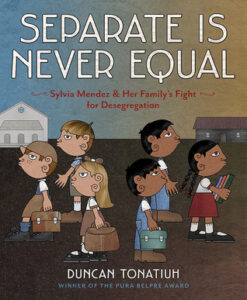 Separate Is Never Equal: Sylvia Mendez and Her Family’s Fight for Desegregation by Duncan Tonatiuh
Separate Is Never Equal: Sylvia Mendez and Her Family’s Fight for Desegregation by Duncan Tonatiuh
This book centers the story of the Mendez family in California and highlights a pivotal moment for the Latino population in the desegregation movement in public education. This is an excellent text to broaden the conversation about Indigenous, Black, and People of Color (IBPOC) experiences with integration in American public schools.
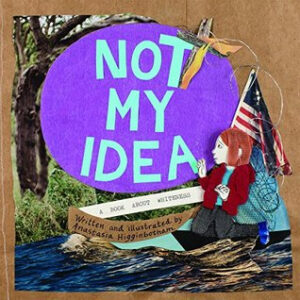 Not My Idea: A Book about Whiteness by Anastasia Higginbotham
Not My Idea: A Book about Whiteness by Anastasia Higginbotham
In this book, Whiteness and racism are named and discussed openly in a healthy and matter of fact way. It is a great tool for introducing and normalizing this conversation for young readers. It explains power and privilege in honest ways.
Books for Middle Grades
Middle school is a great time to engage young people in conversations about fairness, justice, and racial equity. Do so with the following books:
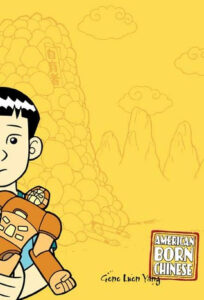 American Born Chinese by Gene Luen Yang
American Born Chinese by Gene Luen Yang
Focused on the story of Jin, this graphic novel explores issues of racial microaggressions and pushes students to think about the anti-Asian racism in the US. It’s a genius text for starting conversations about racial bullying and developing a sense of social awareness among young people.
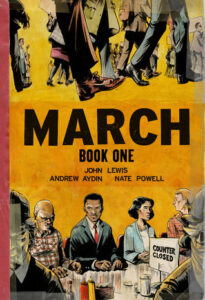 March by Rep. John Lewis and Andrew Aydin, illustrated by Nate Powell
March by Rep. John Lewis and Andrew Aydin, illustrated by Nate Powell
Written as a graphic novel, the three-book series chronicles US Representative John Lewis’s personal journey growing up and participating in the US Civil Rights Movement. This text can be taught to offer some historical background regarding racism and injustice.
The Crossover by Kwame Alexander
Written in a mix of free verse and hip-hop poetry, The Crossover explores the intricacies of coming-of-age and issues of race and identity, with basketball playing an important role in the relationships. Consider the graphic novel version, too!
Brown Girl Dreaming by Jacqueline Woodson
Written in verse, this text shares the stories of childhood and dreams that led Woodson to write about the joys and challenges of growing up in the Civil Rights era. Use this memoir to explore poetic devices, analyze how Woodson develops a narrative through verse, and discuss the way skin color impacts one’s experiences and identity.
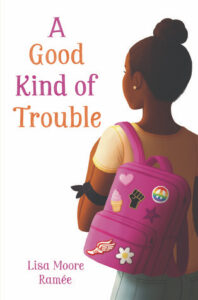
A Good Kind of Trouble by Lisa Moore Ramée
This novel follows Shayla, who decides some rules are worth breaking when she starts to wear an armband at school in support of the Black Lives Matter movement. This text can be used to explore racism and microaggressions, as well as to examine how young people address authority.
Books for High School
In grades nine through twelve, young people are ready to not only read, but also critically discuss social issues and national injustices, particularly ones related to race. Use that energy and open the conversation with the following books:
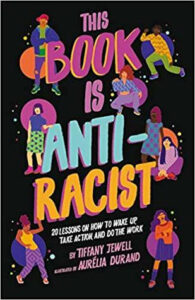 This Book Is Anti-Racist: 20 Lessons on How to Wake Up, Take Action, and Do the Work by Tiffany Jewel, illustrated by Aurelia Durand
This Book Is Anti-Racist: 20 Lessons on How to Wake Up, Take Action, and Do the Work by Tiffany Jewel, illustrated by Aurelia Durand
This nonfiction text is visually pleasing with many great lessons, definitions, and prompts that serve as learning activities for adolescents. Educators can use this text with students to explore the origin of racism and racial oppression.
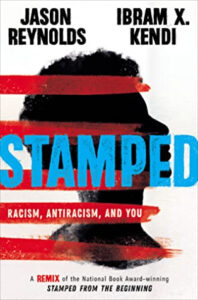 Stamped: Racism, Antiracism, and You by Jason Reynolds and Ibram X. Kendi
Stamped: Racism, Antiracism, and You by Jason Reynolds and Ibram X. Kendi
This remix presents a history of the construction of race and explores a categorization of individuals in regards to race: racists, assimilationists, and anti-racists. Reynolds and Kendi provide contexts and stories of how these racial constructs have influenced people’s dispositions and beliefs. High school educators could employ this accessible text to critically analyze the formation of racism and Black identity. Excerpts from the varying viewpoints of thinkers W.E.B. Du Bois and Booker T. Washington can be paired with this text to examine racist arguments: how they are developed, how they are distributed, and how they can be discredited.
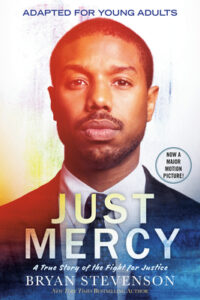 Just Mercy: A True Story of the Fight for Justice by Bryan Stevenson (adapted for young adults)
Just Mercy: A True Story of the Fight for Justice by Bryan Stevenson (adapted for young adults)
Bryan Stevenson brings individuals into his experiences as a lawyer and social justice advocate for those who are marginalized in the criminal justice system. The text follows the case of a wrongfully convicted man and shares accounts of discrimination. Educators can address themes of systemic power, dehumanization, and oppression with this text.
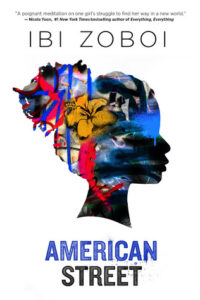 American Street by Ibi Zoboi
American Street by Ibi Zoboi
This symbol-filled novel explores the theme of identity formation from the perspective of a Haitian immigrant teenager. The juxtaposition of the language crafted in this text can be analyzed alongside that crafted in Zora Neale Hurston’s Their Eyes Were Watching God. The novel examines the harsh realities of seeking the American Dream as a Black person and as an immigrant teen.
What will you do with your students to help them become antiracist? What conversations do you need to start or continue? The Committee Against Racism and Bias is here to support you. We believe in the power of stories and writing to move our country forward.
Our young people are ready and they are willing. We invite English teachers to model antiracism for students, and we will see that they’ll follow our lead. We must believe.

Lorena Germán teaches at Headwaters School in Austin, Texas. She is the Chair of NCTE’s Committee Against Racism and Bias in the Teaching of English. She’s a co-founder of #DisruptTexts and the Multicultural Classroom.

Kathleen Colantonio-Yurko is an assistant professor of literacy education and a member of the NCTE Committee Against Racism and Bias in the Teaching of English. Before becoming a teacher educator, Kate taught high school English in Florida.
 Felicia Hamilton is a seventh-year educator who teaches English 11 and African American Literature with a social justice lens in Windsor, Connecticut. She is a member of the NCTE Committee Against Racism and Bias in the Teaching of English and a recipient of the NCTE Early Career Educator of Color Leadership Award.
Felicia Hamilton is a seventh-year educator who teaches English 11 and African American Literature with a social justice lens in Windsor, Connecticut. She is a member of the NCTE Committee Against Racism and Bias in the Teaching of English and a recipient of the NCTE Early Career Educator of Color Leadership Award.

Holly Spinelli began her career as an English teacher and student rights activist in New York City public schools and continues this work in a public high school in the Hudson Valley, New York, and as an adjunct instructor at SUNY Orange County Community College. She is a member of the NCTE Committee Against Racism and Bias in the Teaching of English.
It is the policy of NCTE in all publications, including the Literacy & NCTE blog, to provide a forum for the open discussion of ideas concerning the content and the teaching of English and the language arts. Publicity accorded to any particular point of view does not imply endorsement by the Executive Committee, the Board of Directors, the staff, or the membership at large, except in announcements of policy, where such endorsement is clearly specified.

